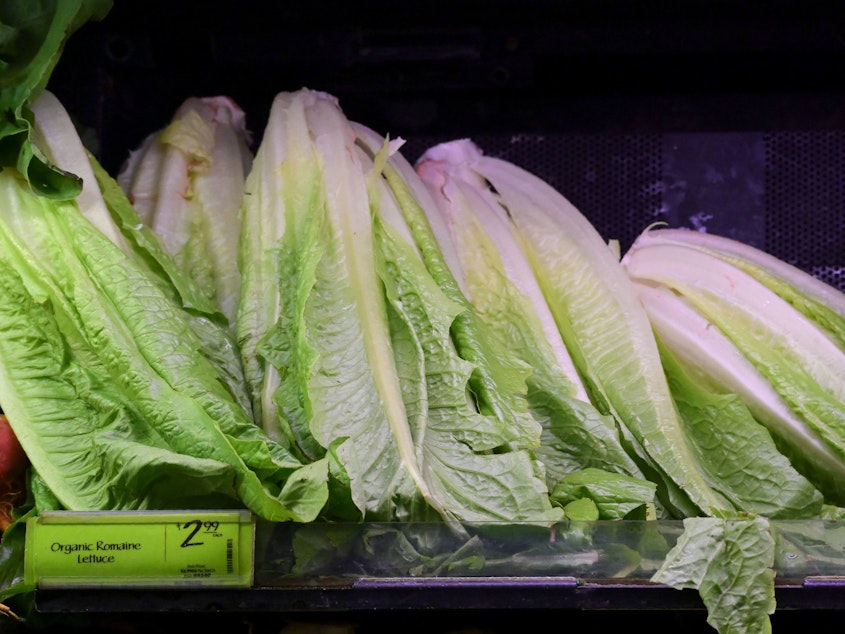Some Romaine Is OK To Eat, But Beware California, CDC Says

The Centers for Disease Control and Prevention has traced an ongoing E. coli outbreak to romaine lettuce grown in the Central Coastal region of California.
Lettuce from other parts of the U.S. and Mexico is safe to eat, the CDC says. However, if you're not sure where your romaine lettuce came from, err on the side of caution and throw it out, health experts say.
A total of 43 people in 12 states have been infected in this outbreak. No deaths have been reported.
The CDC first announced the outbreak a week ago, warning consumers to stay away from all romaine lettuce until more was known about the outbreak.
Now the agency is narrowing that warning.
Sponsored
"Check bags or boxes of romaine lettuce for a label indicating where the lettuce was harvested," the CDC writes. "Romaine lettuce labeled with a harvest region outside of the Central Coastal growing regions of northern and central California (such as the desert growing region near Yuma, the California desert growing region near Imperial County and Riverside County, the state of Florida, and Mexico) is not linked to this outbreak."
Lettuce from a greenhouse or grown hydroponically is also safe.
The warning still applies to all forms of romaine lettuce, including romaine heads, romaine hearts and salad mixes.
If you had lettuce from the Central Coast in your fridge, the CDC recommends a thorough cleaning.
The current outbreak is not related to the romaine lettuce E. Coli outbreak from earlier this year, which was traced to a canal in Arizona.
Sponsored
This outbreak is tied to a series of E. coli infections in 2017. That outbreak was tied to leafy greens, but the specific source was never identified. [Copyright 2018 NPR]



